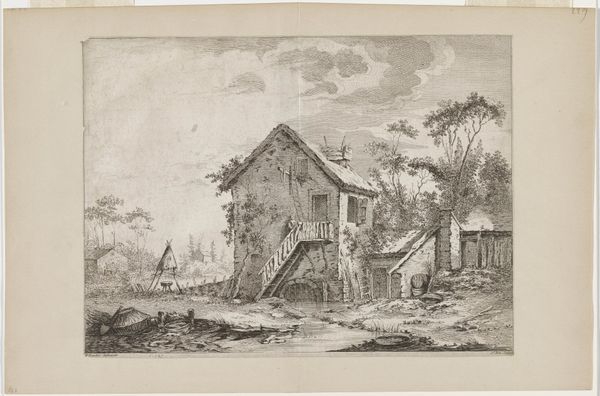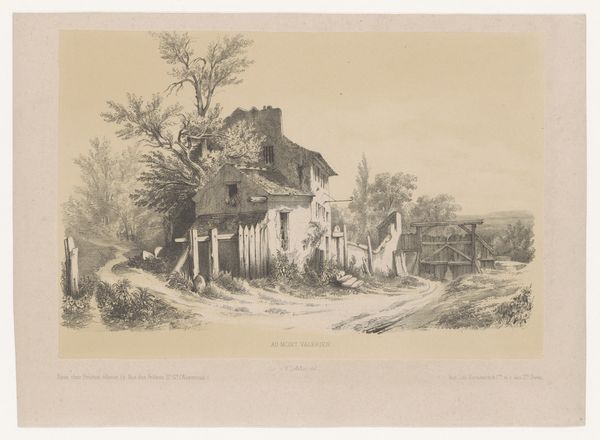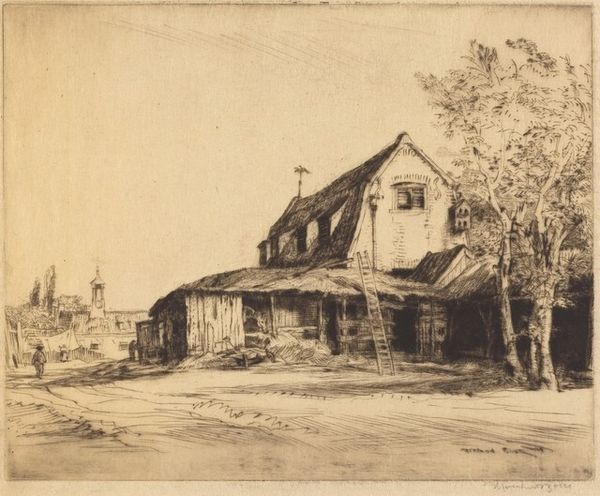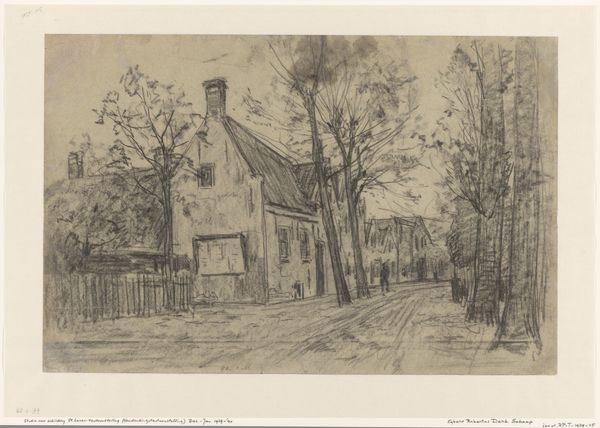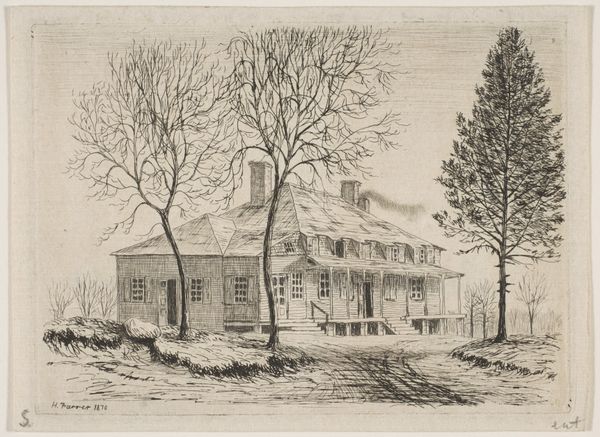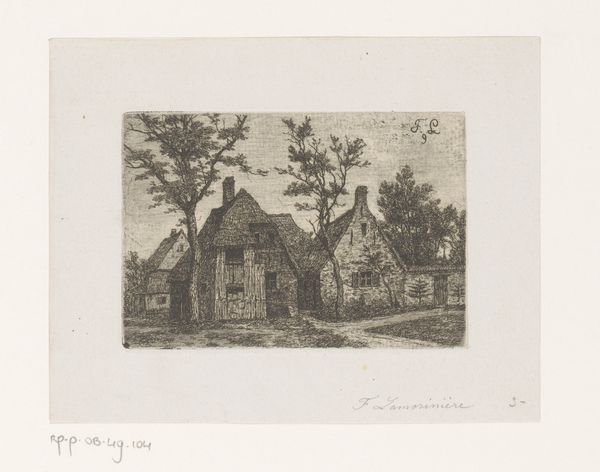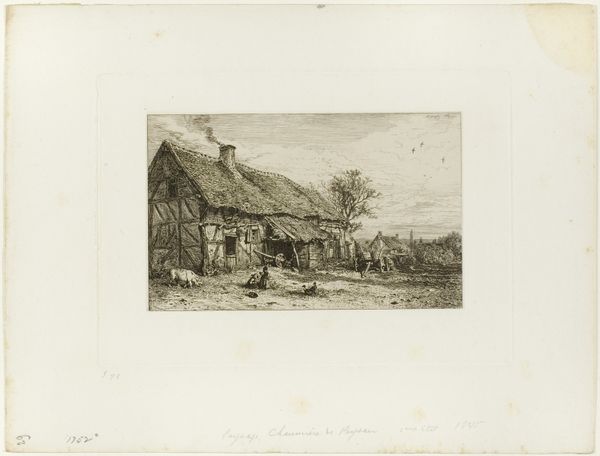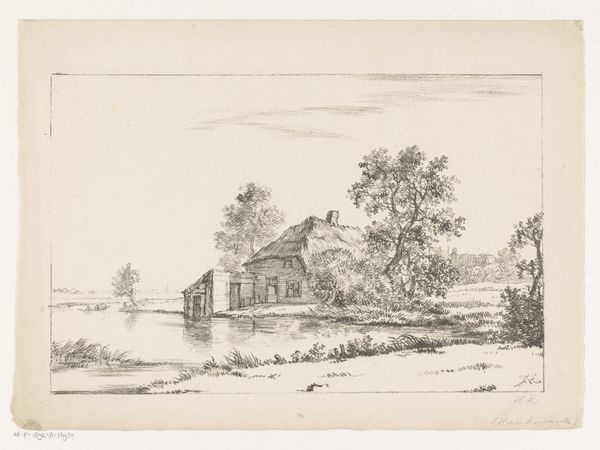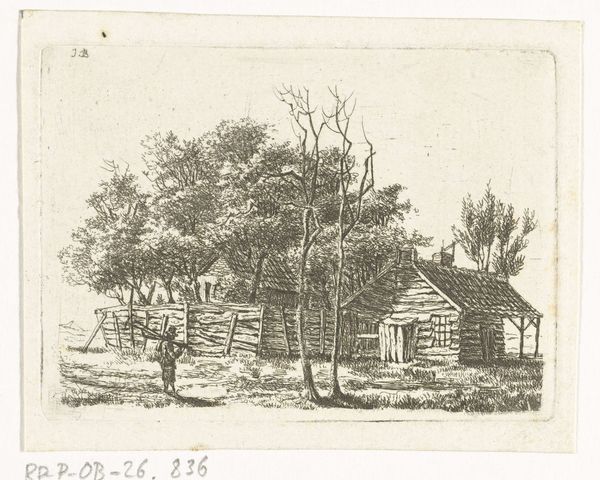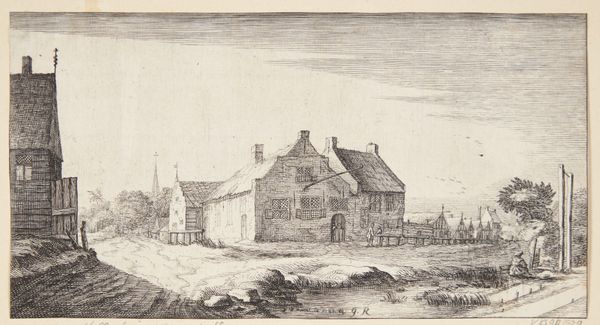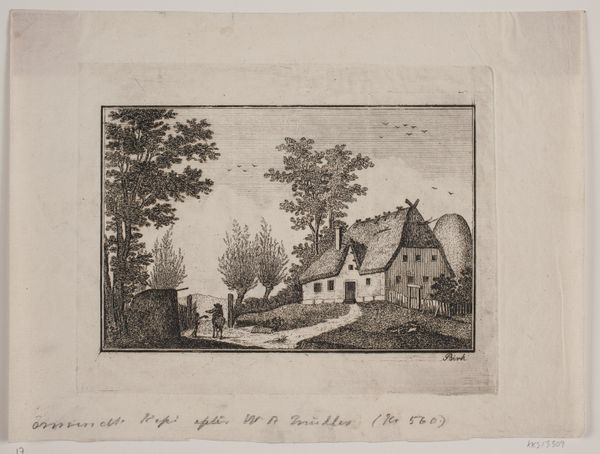
The Harsen Homestead, Corner of 10th Avenue and 70th Street (from Scenes of Old New York) 1876
0:00
0:00
drawing, print, etching
#
drawing
# print
#
etching
#
landscape
#
etching
#
cityscape
#
realism
Dimensions: plate: 4 11/16 x 6 3/16 in. (11.9 x 15.7 cm) sheet: 5 3/16 x 2 3/4 in. (13.2 x 7 cm)
Copyright: Public Domain
Editor: Here we have Henry Farrer's "The Harsen Homestead, Corner of 10th Avenue and 70th Street," created in 1876. It's an etching, so the line work is very delicate. There's a stark, almost lonely feel to it. What can you tell me about this piece? Curator: As a materialist, I see this etching less as a representation and more as a product of specific labor. Consider the etcher's painstaking work, biting the image into the metal plate, a highly skilled, physical activity. It's not just about depicting a homestead, but also about the economic structures enabling the production and consumption of such prints. Editor: How so? Curator: Think about it: Who was buying these "Scenes of Old New York"? What social class had the leisure and funds to acquire such aesthetic records of a vanishing past? The print medium democratizes the image, making it more accessible than a unique painting, yet its audience remained decidedly limited by economic status. It speaks to the material conditions that enabled its very existence. Where did Farrer get his materials? What does it mean to memorialize this site with this method of making? Editor: I hadn't thought about it that way, focusing instead on it as a nostalgic record. The etching process itself becomes a commentary. Curator: Precisely. And note how the detail emphasizes the homestead’s construction—its materials, the arrangement of its architecture. Farrer isn't just showing us a pretty scene; he's documenting a built environment shaped by available resources and social needs. Editor: So, it's a confluence of the artist's labor, the materials employed, and the social context in which it was both created and consumed. I see it now. Curator: Indeed. Analyzing art through a materialist lens brings forth all kinds of things—economic disparity and industrialization for example.
Comments
No comments
Be the first to comment and join the conversation on the ultimate creative platform.
